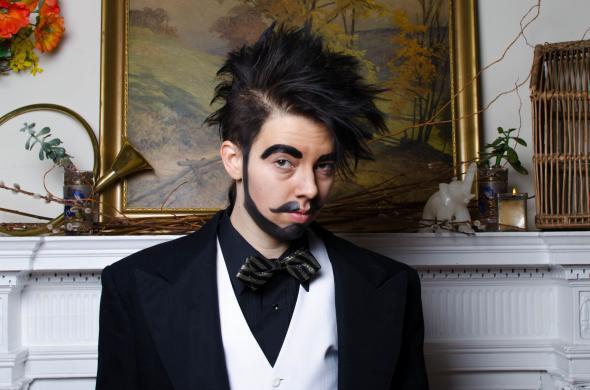

Her ability to playact at Jewish life while still celebrating every aspect of it, culturally and religiously, is nothing short of incredible. She was also an observant Jew, keeping kosher and celebrating Shabbat. She was well-educated, spoke several languages, and involved in Yiddish literary circles. Pepi wasn’t only interested in performing. Listening to her singing… I forgot that I was in Galicia-forgot the horrible depressing poverty with which I had been surrounded for some days.”

It was dominated by a personality… She is the incarnation of the joyous spirit of the Jew, with moments of pathos and sentiment. Landa wrote about the transformative power and utter delight of Pepi’s performances in The Jewish World: “She was the ‘star’ of the program… The moment she stepped on the stage, dressed as a Galician youth, with skull cap and ringlets, the whole atmosphere of the room was different. Her humor, singing voice, and ability to capture a room were legendary and astonishing.
#Drag kings full#
While the group used costumes and songs to poke fun at Jewish life, Pesha, as Pepi, completely changed the game, dressing in full drag at a time when just wearing pants was scandalous enough for a woman. This connection led to Pesha’s interest in performing, and she soon became involved with the famous troupe Der Broderzingers, or the Broder Singers, a group of actors and singers from Brody, Ukraine who traveled all over Eastern Europe performing songs, skits, and plays. As luck would have it, she began working as a maid in a boarding house that just so happened to be owned by the family of Max Badin, an actor of film, stage, and vaudeville and one of the early celebrities of Yiddish theater in Europe and America. Her family was poor, and she worked to help them survive from a young age. Pepi Litman was born in the 1870s (her exact birthdate is not known) as Pesha Kahane in the city of Tarnopol (today known as Ternopil) in what is modern-day Ukraine and was part of Galicia at the time. Pepi paved the way for an exciting tradition of Jews in drag, from Barbara Streisand in Yentl to modern Jewish drag stars like Sasha Velour and Miz Cracker. By dressing in Hasidic garb, Pepi was able to poke fun at the stringent gender roles which governed Jewish life at the time (and still do, for many people). Pepi was a chameleon king, able to transform into anything from a well-dressed dandy in a three-piece suit, ready to charm and flirt with the ladies, to a religious Hasid, complete with tzitzit, payos, and a Talmud tucked under his arm. Pepi traveled around with the famous troupe Der Broderzingers and frequently performed in male drag, something almost unheard of at the time, especially in Jewish circles.

And while there is a rich tradition within Jewish culture of men dressing in drag on Purim, there is also a fantastic history of women dressing in male drag in Yiddish theater and beyond.Ĭase in point: Pepi Litman, the drag king, singer, actor, and star of Yiddish theater and the vaudeville circuit of the early 20 th century. But where are the kings? Drag kings have been around since drag as an art form began which some people trace all the way back to Shakespearean times, and are just as talented, fierce, and amazing as their queen counterparts. Moving beyond the contest framework of early king shows, new drag king troupes like Minneapolis' Dykes Do Drag are "mixing it up" in an attempt to complicate notions of butch/femme gender roles, sexuality, and drag stereotypes.Thanks to the popularity of shows like RuPaul’s Drag Race and The Boulet Brothers’ Dragula, drag queens have been enjoying a massive, unprecedented audience. By engaging the "audience" in drag, the Extravaganza "Science Fair" successfully referenced drag kings' shared history with early American freak shows in a clever and critical way. Participation plays a key role in breaking down the distance between spectator and performer in venues such as the First International Drag King Extravaganza in Columbus, Ohio, and Melinda Hubman's art installation "Performing Masculinities: Take a Chance on Gender" in Minneapolis. Tracing the evolution of drag king performance in the Twin Cities from the 1996 workshop by Diane Torr to the formation of two distinct king troupes in the late 1990s demonstrates a particular trajectory in kinging that reflects a new consciousness and enactment of gender theory through artistic praxis. In an examination of Midwestern drag king performers and communities that have emerged since the study by Volcano and Halberstam of king cultures in London, New York, and San Francisco, this article considers traditional and alternative ways of "doing drag," both performative and participatory, as a means of interrogating the proximity of a "new wave" of king culture to academic theory.


 0 kommentar(er)
0 kommentar(er)
